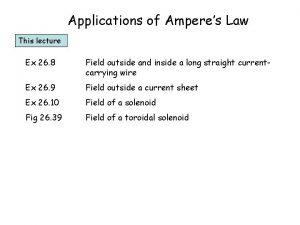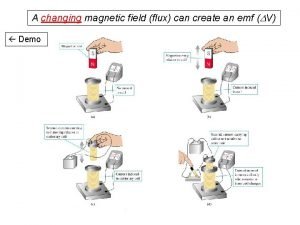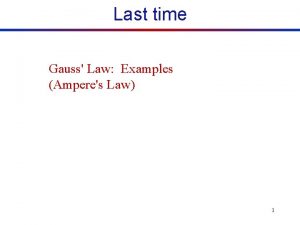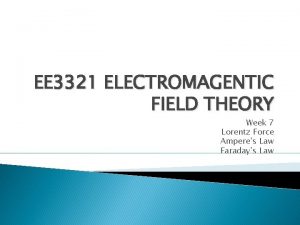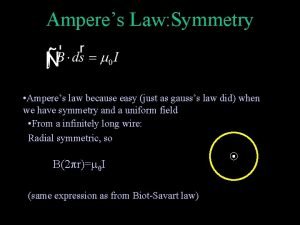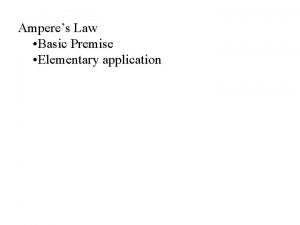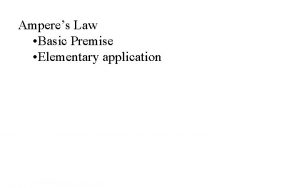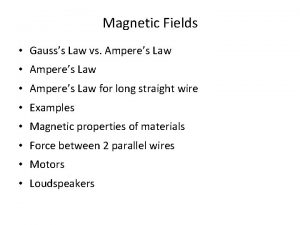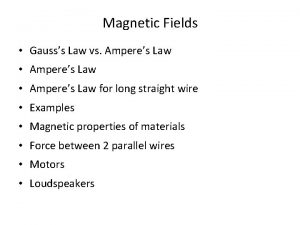Applications of Amperes Law This lecture Ex 26







- Slides: 7

Applications of Ampere’s Law This lecture Ex 26. 8 Field outside and inside a long straight currentcarrying wire Ex 26. 9 Field outside a current sheet Ex 26. 10 Field of a solenoid Fig 26. 39 Field of a toroidal solenoid

EXAMPLE 26. 8: A long straight wire of radius R carries a current I that is uniformly distributed over the circular cross section of the wire. Find the magnetic field both (a) outside and (b) inside the wire. I I

Magnetic field of a solenoid We can use Ampere’s Law. Take the loop with sides abcd and integrate along each side. Only side ab contributes. In bc and da, B is perpendicular to dl. In cd B = 0 (approx). Bh = μ 0 Ienc Bh = μ 0 i N B = μ 0 i n (n = N/h, number of turns per unit length)

S N Magnetic fields of a solenoid. They are identical to those of a bar magnet of the same shape. Graph of the magnetic field on the axis inside a solenoid versus the position x on the axis. The field is nearly constant except near the ends.

Toroid Read p 457 Apply Ampere’s Law to circle of radius r

CHECKPOINT: The figure shows three long, straight, parallel, equally spaced wires with identical currents either into or out of the page. Rank the wires according to the magnitude of the force on each due to the currents in the other two wires. Answer: B, C, A

CHECKPOINT: The figure shows three equal currents i, two parallel, one anti-parallel, and four Amperian loops. Rank the loops according to the magnitude of along each, greatest first. Answer: D, A = C, B
